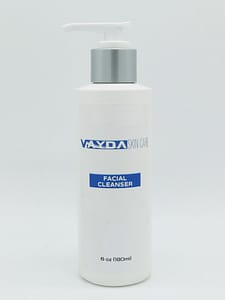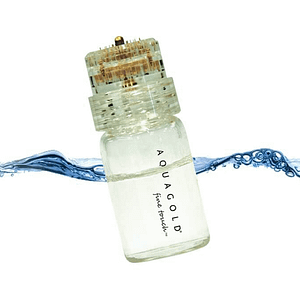INTRODUCTION
Patient demand for non-invasive skin firming treatments has grown as more patients desire
firmer, more youthful skin but with no downtime or interruption of their daily activities.1
Recent innovations in tissue heating devices combined with increased physician expertise
have resulted in more comfortable and effective skin firming treatments. Patients can now
choose non-invasive skin firming treatments over more invasive surgical options. Although
not a substitute for surgical facelifts or tummy tucks, non-invasive skin firming treatments can
produce moderate but noticeable results in lax skin on the face and body. Skin firming is one
of the fastest growing segments of the aesthetic market, with a projected rapid procedure
volume increase to approximately 2 million in 2012.2
Currently there are many non-ablative skin firming devices available utilizing either
radiofrequency or infrared energy to heat the dermis and stimulate the fibroblasts to increase
collagen production. Radiofrequency skin firming devices often cause significant discomfort
during treatment and can produce inconsistent results.3 Treatments performed with the infrared
skin firming devices, including Sciton’s SkinTyte II, are comfortable and tend to produce more
predictable results.
Sciton’s new SkinTyte II delivers infrared energy via broadband light to deposit heat in the
dermis of the skin, triggering collagen remodeling which over time results in firmer skin.4
Early SkinTyte techniques and protocols concentrated heat in one area. Patient discomfort
often prevented delivery of the proper amount of energy to the treated area. Multiple passes
were necessary to effectively heat the treatment zone which made for a long procedure time.
No accurate objective method existed to determine when the treatment endpoint was reached.
All of these factors made it difficult to produce consistent, reproducible results with the initial
static SkinTyte protocol.
These obstacles encouraged a team to develop a modified treatment technique that would be
more tolerable for patients to obtain greater treatment results. Another goal was to reduce the
treatment time without reducing the effectiveness of the treatment. In this paper,
Comfortable, Fast, and Effective Skin Firming
Using the Motion Technique with SkinTyte II™
MARIE N. DiLAURO, MD
2 | SCITON White Paper
TECHNIQUE
A patient consultation and physical evaluation were performed with careful attention to
patient concerns and expectations. Patients understand that this non-surgical treatment is not a
substitute for a surgical facelift or body lift. For best results, a series of three to six treatments
are recommended to be performed at two to four week intervals.
Treated areas were cleansed. Pretreatment photographs were performed in a dedicated photo
room prior to each treatment session with the patient in standard positions including front,
bilateral 90˚, and bilateral 45˚ views.
No pre-operative medication or numbing cream was utilized. After the patient was positioned,
a thin layer of room temperature gel was applied to the treatment area. An infrared
thermometer was utilized to monitor the skin surface temperature throughout the treatment.
The SkinTyte II filter was inserted into the BBL handpiece and the Smoothie Adapter™ was
positioned to cover the sides and edges of the crystal.
Treatment settings were a range of energy 10-14 Watts/cm2 with crystal temperature set to
30 ˚C. No post cooling was used so that a more accurate epidermal temperature measurement
could be obtained. Utilizing the Motion Technique, a typical square treatment zone of
approximately 6 cm x 6 cm on the body or 5 cm x 5 cm on the face was treated until an
epidermal temperature of 40 to 42 ˚C per treatment zone was achieved. Occasionally a 6 cm
diameter circular treatment pattern was utilized on the face or body. Typically three to four
treatment cycles consisting of 15 seconds each were required to achieve the target epidermal
temperature. In some instances, it was necessary to discontinue treatment in a particular zone
prior to the target temperature being achieved due to patient discomfort. In these instances,
the area was treated with an additional one or two treatment cycles after the next adjacent
area was treated. Epidermal skin temperature was measured with the infrared thermometer in
the center of the treatment zone after each treatment cycle of 15 seconds and whenever the
patient noted some discomfort.
CASE STUDIES
Case 1
The patient is a 55 year old, Gravida 2 Para 2 Fitzpatrick Type III female treated for abdominal
laxity following abdominal liposuction performed six months prior to this treatment. She
received one treatment to her upper and lower abdomen utilizing the Motion Technique
Motion Technique with SkinTyte II | M. DiLAURO, MD
I will share two clinical cases that demonstrate the consistent results obtained utilizing the
“Motion” Technique with Sciton’s SkinTyte II on both the face and the body.
3 | SCITON White Paper
delivered to a 6 cm diameter circular treatment area. The left side of the abdomen was treated
with the 800ST filter at 10 Watts/cm2 at 30 ˚C temperature until an external temperature of 42 ˚C
was achieved. This required three passes. No post cooling was used.
The right side of the abdomen was treated in a similar fashion as described above utilizing
the 695ST filter at 13 Watts/cm2. Two to three passes were required to achieve an external
temperature of 42 ˚C as measured by the infrared thermometer.
Patient and physician noticed immediate smoothing of the skin in the treated area on the day
of the treatment with greater improvement noted over the next several months. The follow-up
photo demonstrates: an overall improvement in laxity as well as smoothing of the dimpled
cellulite appearance of the abdomen.
®
SkinTyte™
Parameters: 150 J, 15 s, 30 ºC
©2009 Sciton, Inc. All rights reserved. 2600-033-91 Rev. A B&A ST
BEFORE / AFTER | One month post 1 tx | courtesy of Marie N. DiLauro, MD ®
SkinTyte™
Parameters: 150 J, 15 s, 30 ºC
©2009 Sciton, Inc. All rights reserved. 2600-033-91 Rev. A B&A ST
BEFORE / AFTER | One month post 1 tx | courtesy of Marie N. DiLauro, MD
Before After 1 Treatment
Case 2
The patient is a 36 year old Fitzpatrick Type II woman who wanted firmer, younger looking
skin. She received five SkinTyte II treatments to her face and submentum at two to four week
intervals utilizing the Smoothie Adapter and the SkinTyte II filters 590ST and 695ST. A thin layer
of room temperature gel was applied. The epidermal skin temperature was monitored throughout
the treatment with an infrared thermometer. Treatments 1, 2, 4 and 5 were performed with the
Motion Technique, 695ST filter at 13 Watts/cm2 at 30 ˚C with no post cooling. Three to four
passes were made until an epidermal temperature of 40 to 42 ˚C per treatment area was achieved.
Perioral and periorbital areas were treated with the 590ST filter using a stationary technique with
the small square Finesse Adapter™ (1.5 cm x 1.5 cm). Four adjacent 2.5 cm2 areas were treated
with one pulse each utilizing 10 Watts/cm2 for a total of 4 passes.
Treatment number 3 was performed utilizing the same technique as above but instead the 590ST
filter was used for the entire treatment, and 19 Watts/cm2 to the face and submental area. The
perioral and periorbital areas were treated in the same manner for treatment number 3 as in
treatments 1, 2, 4, and 5 as described previously.
Both patient and physician noticed an improvement in the tone and light reflection of the skin in
the periorbital and upper cheek regions.
Motion Technique with SkinTyte II | M. DiLAURO, MD
4 | SCITON White Paper
Before After 5 Treatments
DISCUSSION AND SUMMARY
Performing Sciton’s SkinTyte II with Motion Technique provides a safe, comfortable treatment
experience for my patients while producing excellent, reproducible results on both the face and
body. The addition of optimized filters has increased treatment results while further reducing
treatment time. The addition of this new technological enhancement to Sciton’s SkinTyte II
will further increase treatment results making Sciton the logical choice for both physicians and
patients.
The SkinTyte II filters are tailored for specific skin types to maximize the speed and efficacy
of treatment: 590ST for skin types I-III, 695ST for IV-VI, and 800ST for I-VI. This white paper
mentions the use of the 695ST filter for various skin types, as I was testing the optimized
filters for all skin types, I-VI. We found that 590ST is best for lighter skin types and 695ST is
preferred for darker skin types.
REFERENCES
1. Plastic Surgery Practice, “Skin Tightening” Leake and Ellenberger, March 2006.
2. The Aesthetic Guide: Market Forecast Predicts Continued Growth for Aesthetics.
January/February 2009.
3. Journal of Drugs and Dermatology: Laser Skin Tightening: non-surgical alternative to
the face lift, Alexiades-Armenakas. March 2006.
4. Mai Pham, Aesthetic Trends. May/June 2006. Skin Tightening, Part I.

Facial Cleanser
6 oz (180ml) FACIAL CLEANSER Gently and Efficently cleanses skin, while reinforcing skin texture and tone. Works well with all skin types. DIRECTIONS: Apply info



